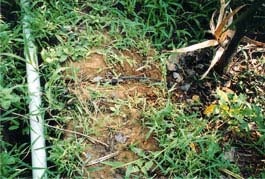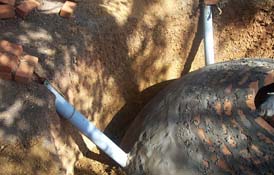 Human faeces and urine (toilet manure) are a serious waste disposal problem especially in areas with high human population density. At the same time they are rich in nutrients that are essential to plants.
Human faeces and urine (toilet manure) are a serious waste disposal problem especially in areas with high human population density. At the same time they are rich in nutrients that are essential to plants.
Use of toilet manure in agriculture was extensively practiced in China, Japan, Korea and Singapore. In Bangalore, Acharya and his team has suggested the use of night soil in compost production. However, the introduction of toilets and sewage systems has drastically reduced the use of this valuable nutrient source. In rural India, recent propaganda of popularizing the toilet construction has further reduced the recycling possibilities.
This article attempts to popularize appropriate recycling technology for toilet manure. According to the authors, on an average 454 kg fecal matter and 500 l urine is produced per person per year. Fecal matter contains 5-7 per cent nitrogen, 3.5-4 per cent phosphorus, 1-2.5 per cent potassium, 4-5 per cent calcium and 40-55 per cent carbon. As per conservative estimates, 53 million population of Karnataka could provide enough manure to 18 per cent of its total cultivated area.
According to the authors, on an average 454 kg fecal matter and 500 l urine is produced per person per year. Fecal matter contains 5-7 per cent nitrogen, 3.5-4 per cent phosphorus, 1-2.5 per cent potassium, 4-5 per cent calcium and 40-55 per cent carbon. As per conservative estimates, 53 million population of Karnataka could provide enough manure to 18 per cent of its total cultivated area.
Varanashi Research Foundation has developed models for use of toilet manure in organic farming with modifications in the septic tank and subsequent utilization of the digested material while no modification has been made in the existing toilet bowl. The methods and materials along with their cost estimation are briefly described in the article.
The results and discussions suggest that -
- Psychological inhibition to use human fecal matter in agriculture is the biggest hindrance. To overcome this mental block, the distribution method in the Varanashi Research Foundation system has been made user friendly.
- In the model explained for individual household of five people the nutrient supplied by the fecal matter could supply fifty per cent organic matter and nutrients to 266 plants. The cost of the same is estimated at INR 2,560 which means that 11.3 per cent return is obtained on the investment of INR 22,650 i.e., within 9 years the entire extra investment comes back. If a simpler hose pipe design is adopted, the return is 21.1 per cent and the investment will come back in five years! Same pipe line could be also used for giving additional irrigation.
- In case of community unit, the value of nutrient rich water to about 1055 plants could be valued at INR 10,550 i.e., 11.46 per cent return. Since 2002, arecanut, cocoa and banana have been successfully grown with 100 per cent toilet manure. Growth and yield found to be at par with the plants fed with organic compost manures. However, in the methods and materials, suggestion has been made to construct the distribution system in such a way that 50 per cent of the nutrients are supplied by human waste and 50 per cent by other organic input sources.
- Toilet manure and organic standards: As per the IFOAM norms, human excrement could be used as fertilizers but should not be directly applied on edible parts.
The models developed and demonstrated at Varanashi Research Foundation for utilization of toilet manure are user friendly. For small growers it would be a valuable organic nutrient source. There is no fear of pathological contamination when used in root region, avoiding the contact with the edible part.
Download the article here -